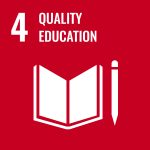The second day of the Inference Track at the MIDSEA Summer School 2025, held on June 24, 2025, in the Yudhistira Room at the MICC, The Alana Yogyakarta Hotel and Convention Center, was a success. The session, titled “Implementing MLE,” discussed the challenges of applying Maximum Likelihood Estimation (MLE) to complex statistical models. One issue explored was the uncertainty in parameter estimation, especially when dealing with models that have many variables and parameters. In this session, participants learned how numerical and optimization methods can be used to find parameters that maximize the likelihood function, even though the models used often involve uncertainty and imperfect data.
Angkana T. Huang, an expert in statistical inference, explained that MLE focuses on finding parameters that maximize the likelihood function—a function that measures how well the model fits the observed data. Participants were introduced to various strategies for obtaining MLE, including analytical approaches, grid search, and numerical methods. Each method has its own advantages and challenges, especially when dealing with more complex models with many parameters.
As a continuation, Huang also explained that while MLE is a very effective tool, its use in more complex models often presents challenges, especially in simultaneously optimizing many parameters. Therefore, participants were introduced to techniques such as Imagine, Slice, and Profile, which allow them to better understand model dynamics and overcome uncertainty in parameter estimation, leading to more accurate and reliable models.
The material then shifted to the topic of Confidence Intervals (CI), explaining the importance of constructing CIs to estimate uncertainty in parameter estimation. Participants were introduced to various methods for calculating CIs, such as the Likelihood Ratio Test and the use of the Hessian Matrix to measure parameter variability. In addition, bootstrapping techniques were also discussed as a more flexible alternative, allowing for CI estimation without relying on specific distributional assumptions.
Many sessions were filled with exercises, where participants had the opportunity to try R code to understand the material more deeply. The speaker actively assisted participants in running the code and overcoming obstacles that arose, ensuring that every participant could apply the theories learned. Participants were very active in asking questions and discussing during this session, delving deeper into ways that could be used to improve the accuracy of parameter estimates and enhance the reliability of statistical models. This session provided very valuable insights for participants in facing more complex statistical challenges.
 Keywords: MIDSEA, Modelling, Infectious Diseases Modelling
Keywords: MIDSEA, Modelling, Infectious Diseases Modelling
Author: Najida Humaira
Photo: Lucetta Amarakamini


